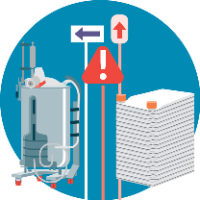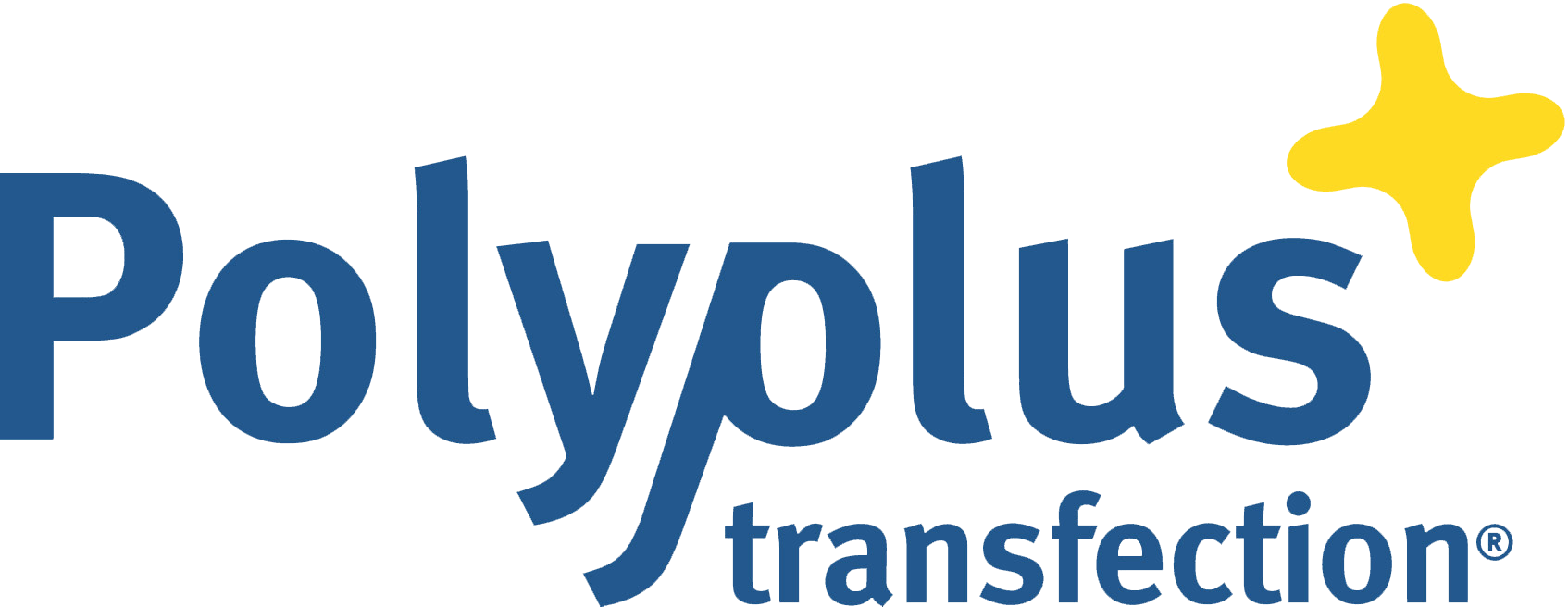Scaling up viral vector production: the importance of quality
Cell & Gene Therapy Insights 2021; 7(8), 1087–1092
10.18609/cgti.2021.142
Q How would you frame the key issues and considerations relating to AAV bioprocess and scale-up?
JL: When talking about scale-up, it’s important to take into account the entire drug product lifecycle, from drug candidate selection (R&D) to clinical trials and finally marketing authorization. The manufacturing scale could increase from milligrams to kilograms, but it’s not just about producing larger quantities – quality also has to increase as you move into the clinic.
Key issues during scale-up occur in three areas: process engineering, quality, and regulatory aspects.
Q Can you tell us more about those three aspects?
JL: From the beginning of the manufacturing process development, it is important to start with the final large-scale process in mind. If you start with a process that cannot be easily scaled up, you are creating a major issue later on.
The main issues during the scale-up process are maintaining the viral vector yield rate and the development of new impurities not detectible at smaller scales that may require extra steps or modification during the purification phase. This second issue may require further methods and validations – which leads to the second key issue aspect during scale-up: quality.
During scale-up, we need to ensure that the final product is of a greater quality grade and meets previous specifications. According to cGMP, we must re-assess and validate methods, equipment, personnel and environment, every time we scale up – the exception is if process understanding is fully controlled and falls into quality by design. During manufacturing development, many variables may be modified such as the order of addition for substances, mixing parameters, material, or equipment. All these modifications may impact the quality of the product and so may require regulatory approval before or after market authorization. This leads to the third key issue: regulatory aspects.
Following cGMP and the recommendation in the guidelines ensures the security, reproducibility, and robustness of the process, but not necessarily the efficacy or potency of the product. AAV vectors used in cell and gene therapy are cutting-edge technology, and regulations do not always keep up with innovations in science. However, sometimes if you know you have a real understanding of the product and process you can have some flexibility in a regulatory pathway.
Q What is your advice on the use of GMP raw materials for vector manufacturing through the different stages of bioprocess development and scale-up?
JL: A primary topic in AAV vector bioprocessing is the choice of starting and raw material. During AAV manufacturing there are fewer opportunities to improve downstream purification, but many aspects of the upstream process can still be improved.
For example, FDA (USP 1043) and EMA (Eudralex Volume 4 part 4) regulations recommend pharmaceutical grade/GMP grade for transfection reagent. However, both agencies accept that many raw material suppliers only supply research-grade reagents. It is ultimately the product manufacturer’s responsibility to ensure that the product meets all the necessary functional quality and recommendation requirements.
In future, regulation should move to a fully GMP compliant supply, so starting the process with a supplier that can offer a GMP raw material from the beginning to the final product will be a real advantage. Remember that any change in raw materials will lead to regulatory verification that could increase the time to market for the product. Moreover, a good raw material supplier can provide scientific support during the scale-up process.
Q What are the key points of evolution relating to regulatory guidance and requirements for viral vector production, and what are the chief resulting considerations for manufacturers?
JL: There have been no major changes in regulation for advanced therapy medicinal products (ATMPs) in recent years. However, several guidances have been provided by the regulatory bodies over the past 4 years.
The number of cell and gene therapy clinical trials has been steadily increasing for the past 20 years, creating a demand for regulatory frameworks for ATMPs. The COVID pandemic crisis has also led to regulatory advances relevant to the cell and gene space – in particular, the rapid approval of mRNA vaccines.
Recent guidance such as “CMC information for Human Gene Therapy IND Applications – Guidance for Industry,” published by the FDA in 2020, or the revision of the “Guideline on quality of genetically modified cells,” published by the EMA in June 2021, target important aspects in drug development strategy. It is positive to see that regulatory bodies are now more open to working with industry to develop regulations for ATMPs.
Q Are there any concerns relating to regulatory disharmony, for example between the USA and Europe?
JL: Indeed, there are some discrepancies between the USA and Europe, especially in the regulatory framework for ATMPs. Even the definitions of ATMPs differ – regulatory agencies agree on the legal basis, but there are some differences in sub-classification. In the EU, there are four major groups (gene therapy products, somatic-cell therapy medicinal products, tissue-engineered medicinal products, and combined products) whereas the USA sub-classification covers only three groups (gene therapy products, cellular products, and combined products).
There are more differences when applying to run a clinical trial. In the USA, an Investigational New Drug (IND) application will offer unlimited access during the development program and be updated through amendments. Meanwhile, in the EU, a Clinical Trial Application (CTA) approval is only valid for one clinical trial. Moreover, the CTA must be validated by each country in the EU area and is not centralized as in the FDA process. Fortunately, requirements for dossier submissions and GMP are harmonized by the International Conference of Harmonization (ICH). ICH provides a general platform for drug development requirements, which historically harmonized regulations between Japan, the EU, and the USA. There are differences in regulatory pathways but requirements regarding drug product quality are harmonized.
Q How can you avoid or mitigate risk in making changes to an AAV vector bioprocess?
JL: You must understand the interactions between the manufacturing process and the product – in other words, quality by design. It’s an approach that has been around since the early 2000s but has really gained traction amongst manufacturers and regulators in recent years.
QbD is defined in ICH Q8(R2) and ICH Q11 as a holistic approach to pharmaceutical development, using knowledge management to enhance the quality of the product and the manufacturing process. It encompasses all the aspects of GMP, including the materials, equipment, and personnel.
Quality by design is based on several quality tools, which are described in the ICH Q9 guideline on quality risk management and the ICH Q10 guidelines on pharmaceutical quality systems. Quality by design can be summarized in six major steps:
Step 1 is to identify the Quality Target Product Profile of the product – a prospective summary of the candidate drug quality characteristics required to ensure quality goals while taking into account efficacy and safety.
Step 2 is to define the Critical Quality Attributes – physical, chemical, biological, or microbiological characteristics with defined limits to ensure product quality goals. These include but are not limited to the drug substance, the excipients, the intermediates, and the raw materials.
Step 3 is to conduct a risk assessment linking material attributes and process parameters to the drug products, in order to identify which material attributes and process parameters could affect the final drug product.
Step 4 is to formalize the Design Space – interactions between the product and manufacturing process. The concept of Design Space covers all development phases of a product so mastering it will significantly ease the scale-up process.
Step 5 is the control strategy phase, which is designed to ensure that a product of required quality will be produced consistently all the way through the product lifecycle.
Finally, Step 6 is to ensure continuous improvement throughout the product lifecycle.
The end goal of quality by design is that the quality parameters of the product should be within a predefined target range, rather than a specific value. This is possible because you have a detailed understanding of the Design Space and allows more flexibility to make changes during scale-up – and ultimately a faster time to market.
Affiliation
Jeffrey Lacouchie
Regulatory Affairs Specialist, Polyplus-transfection
Authorship & Conflict of Interest
Contributions: All named authors take responsibility for the integrity of the work as a whole, and have given their approval for this version to be published.
Acknowledgements: None.
Disclosure and potential conflicts of interest: The author has a labor contract with Polyplus-transfection SA.
Funding declaration: J Lacouchie declares the following contract: Polyplus-transfection SA: labour contract. The author received no other financial support for the research, authorship and/or publication of this article.
Article & copyright information
Copyright: Published by Cell and Gene Therapy Insights under Creative Commons License Deed CC BY NC ND 4.0 which allows anyone to copy, distribute, and transmit the article provided it is properly attributed in the manner specified below. No commercial use without permission.
Attribution: Copyright © 2021 POLYPLUS-TRANSFECTION SA. Published by Cell and Gene Therapy Insights under Creative Commons License Deed CC BY NC ND 4.0.
Article source: Invited.
Interview conducted: Sep 10 2021; Publication date: Oct 5 2021.


